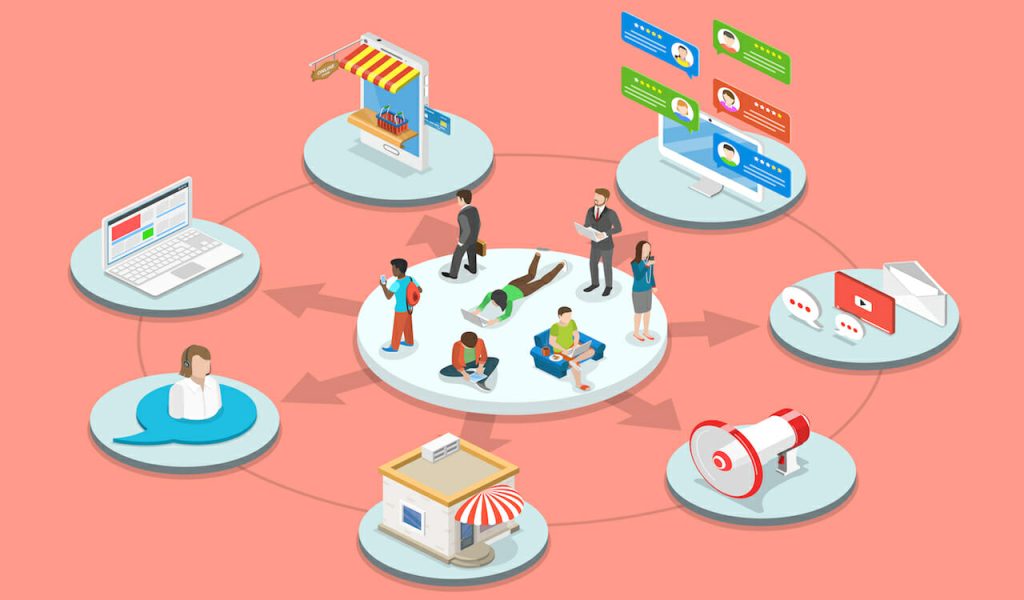
Creating a Seamless Omnichannel Customer Experience
In today’s fast-paced digital landscape, customers expect a fluid shopping experience across multiple touchpoints. Whether they browse your products on Amazon, check reviews on Shopify, or complete their purchase in a brick-and-mortar store, consistency is key. A seamless omnichannel strategy ensures customers receive a unified experience, no matter where or how they interact with your brand. Here’s how you can optimize your omnichannel approach to drive customer satisfaction and increase sales.

Understanding the Omnichannel Approach
Omnichannel retail goes beyond simply selling on multiple platforms—it’s about integrating these channels to create a cohesive customer journey. A shopper might discover your product through a social media ad, research it on your website, add it to their cart via a Walmart Marketplace listing, and finally complete the purchase in-store. When these touchpoints are connected, customers experience seamless brand interactions, leading to higher conversion rates and brand loyalty.
Key Components of an Effective Omnichannel Strategy
Consistent Branding Across Channels
Your brand messaging, tone, and visuals should remain uniform across all sales channels. Whether a customer engages with you on Amazon, visits your Shopify store, or walks into your retail location, they should experience a unified brand identity.Unified Customer Data
Centralizing customer data across platforms enables personalized marketing and better customer service. Using customer relationship management (CRM) tools like Salesforce can help track interactions and optimize customer engagement.Seamless Inventory Management
Nothing frustrates customers more than finding a product online, only to learn it’s out of stock when they visit your store. Using omnichannel inventory management solutions like ShipBob can help you sync stock levels in real time.Cross-Channel Customer Support
Ensure customers can reach you through multiple communication channels, including live chat, email, social media, and in-store support. Platforms like Zendesk streamline support across different touchpoints, improving customer experience.Flexible Fulfillment Options
Consumers want choices when it comes to receiving their orders. Offering BOPIS (Buy Online, Pick Up In-Store), same-day delivery, and easy returns ensures convenience and enhances customer satisfaction.

Leveraging Data for Personalization
Personalization is the heart of an omnichannel strategy. Brands leveraging customer data to tailor recommendations and messaging see significantly higher engagement. For example, Amazon’s AI-driven recommendation engine customizes product suggestions based on past behavior, increasing the likelihood of repeat purchases.
How to Personalize the Shopping Experience
Use customer browsing and purchase history to send personalized product recommendations.
Leverage email marketing automation to re-engage customers who abandoned their carts.
Implement dynamic content on your website that adjusts based on user interactions.
Integrating Social Media for a Holistic Experience
Social media plays a crucial role in connecting omnichannel experiences. Platforms like Instagram and TikTok drive product discovery, while shoppable posts streamline the buying process. With Facebook Shops, businesses can integrate their social media presence with their eCommerce stores, making it easier for customers to transition from browsing to purchasing.
The Role of Mobile in Omnichannel Commerce
With mobile shopping on the rise, optimizing for mobile users is essential. A mobile-friendly website, app-based shopping, and in-app promotions ensure customers have a frictionless experience. Companies like Walmart have invested heavily in mobile-first strategies, making it easier for consumers to browse, buy, and pick up products through their mobile devices.
Measuring Success: Omnichannel KPIs to Track
To ensure your omnichannel strategy is effective, monitor key performance indicators (KPIs), such as:
Customer Retention Rate: Measures how well your brand retains customers across platforms.
Cart Abandonment Rate: Identifies friction points in the checkout process.
Cross-Channel Conversion Rate: Tracks the number of customers who engage on one platform and complete a purchase on another.
Customer Lifetime Value (CLV): Determines the long-term revenue potential of customers interacting through multiple channels.

Final Thoughts
A well-executed omnichannel strategy is essential for modern retailers looking to stay competitive. By integrating Amazon, Shopify, Walmart, and other platforms into a unified customer experience, brands can boost engagement, loyalty, and revenue. Leveraging data-driven personalization, seamless fulfillment, and cross-channel support will position your business for long-term success in an increasingly connected world.
Need help refining your Amazon omnichannel strategy? Our team specializes in optimizing brand presence across multiple platforms. Contact us today to learn more!














